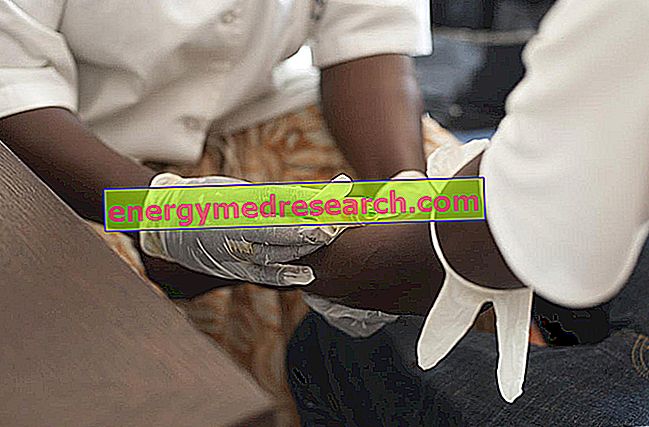
What is TachoSil?
TachoSil is presented in pads coated with the following active ingredients: human fibrinogen and human thrombin.
What is TachoSil used for?
TachoSil is used in surgical procedures to stop bleeding and to seal the surfaces of internal organs. It also acts as a suture support in vascular surgery and is used on adult patients, when standard techniques are insufficient.
The medicine can only be obtained with a prescription.
How is TachoSil used?
The use of TachoSil is reserved for competent surgeons and must take place in sterile conditions.
TachoSil is intended exclusively for direct application on the area to be treated. Each swab should be applied in such a way as to cover a margin of 1-2 cm around the wound. The number of TachoSil swabs to be applied depends on the size of the wound. As part of the studies conducted, 1 to 3 pads in the 9.5 x 4.8 cm format were normally used; however, in some cases up to seven swabs were applied. For smaller wounds we recommend the smaller sizes (4.8 x 4.8 cm or 3.0 x 2.5 cm). Where necessary, the pads can be cut to the appropriate size. Avoid intravascular use.
How does TachoSil work?
TachoSil contains fibrinogen and thrombin as a dry coating of a surface of the pad, which is composed of collagen. Thrombin and fibrinogen are natural substances obtained from human blood. In contact with fluids, such as blood, the coating of the buffer containing the active ingredients dissolves and thus fibrinogen and thrombin are activated. Fibrinogen is then converted into a protein, fibrin, which forms a clot that causes the collagen swab to adhere firmly to the wound surface, stopping bleeding and sealing the tissue. The swab is left inside the body, where it melts until it disappears completely.
How has TachoSil been studied?
Six clinical studies have been completed.
- Two of these studies examined the effects of TachoSil in stopping bleeding (haemostasis). These studies compared the effects of TachoSil with argon beamer (a tool that cauterizes the cut surface and reduces bleeding) on a total of 240 adult patients undergoing liver surgery. The main measure of effectiveness was the time until bleeding stopped. A third study compared TachoSil with normal sutures in 185 patients undergoing renal surgery.
- Two studies have been carried out to evaluate the possibility of using TachoSil as a tissue sealant. These studies compared TachoSil with the normal surgical techniques of suturing and stapling in a total of 490 patients undergoing lung surgery. Efficacy was measured by examining air loss from the lungs after surgery.
- The latest study examined the effectiveness of Tachosil in cardiac surgery or major vascular surgery. The study compared Tachosil with the normal materials favoring coagulation in 120 patients, out of about three quarters of which stitches were also applied to promote hemostasis. The main measure of effectiveness was the number of patients whose bleeding stopped within three minutes.
What benefit has TachoSil shown during the studies?
TachoSil was more effective than the argon beamer in achieving hemostasis in liver surgery. In the first study, the average time needed to obtain hemostasis with TachoSil was 3.9 minutes compared to the 6.3 minutes required with the argon beamer, and in the second study these values were 3.6 and 5 respectively, 0 minutes. TachoSil was more effective than suturing in patients undergoing renal surgery.
The first study on patients undergoing lung surgery was not sufficient to support the use of TachoSil to seal the tissue, because only a very limited number of patients in the study presented air leaks. However, in the second study, which involved 301 patients, it took an average of 15.3 hours for the losses to stop with TachoSil, compared to 20.5 hours with standard techniques.
TachoSil has proved more effective than standard materials in achieving hemostasis also in cardiac surgery or vascular surgery. After three minutes, bleeding had stopped in 75% of patients treated with TachoSil (44 out of 59), compared to 33% of those treated with standard techniques (20 out of 60).
What is the risk associated with TachoSil?
Accidental application of TachoSil intravascularly may cause thromboembolic complications (clot formation). Like other sealants, TachoSil can cause an allergic reaction. In rare cases, patients may also develop antibodies to the proteins contained in TachoSil, with consequent possible interference with blood clotting. The most common side effect of TachoSil (seen in between 1 and 10 patients in 100) is pyrexia (fever). For the full list of all side effects reported with TachoSil, see the Package Leaflet.
TachoSil should not be used in patients who may be hypersensitive (allergic) to fibrinogen, thrombin or any of the other components.
The use of TachoSil in neurosurgery (surgery on the nervous system, including the brain) or in interventions aimed at joining two gastrointestinal sections, for example with a gastric bypass, has not been studied.
Why has TachoSil been approved?
The Committee for Medicinal Products for Human Use (CHMP) decided that the benefits of TachoSil outweigh the risks if used as a supportive treatment in surgical interventions to improve haemostasis, to seal tissues and to support suture in vascular surgery in cases where standard techniques are insufficient. The Committee therefore recommended that TachoSil be given marketing authorization.
More information on TachoSil:
On 8 June 2004, the European Commission issued a marketing authorization for TachoSil to Nycomed Austria GmbH, valid throughout the European Union.
For the full EPAR for TachoSil, click here.
Last update of this summary: 01-2009



